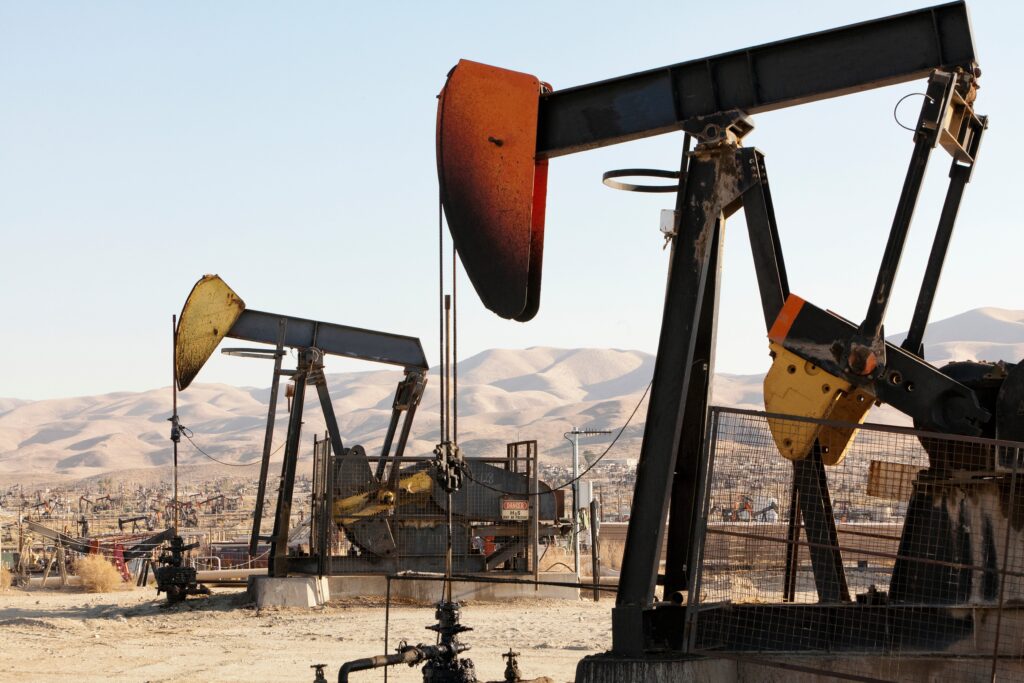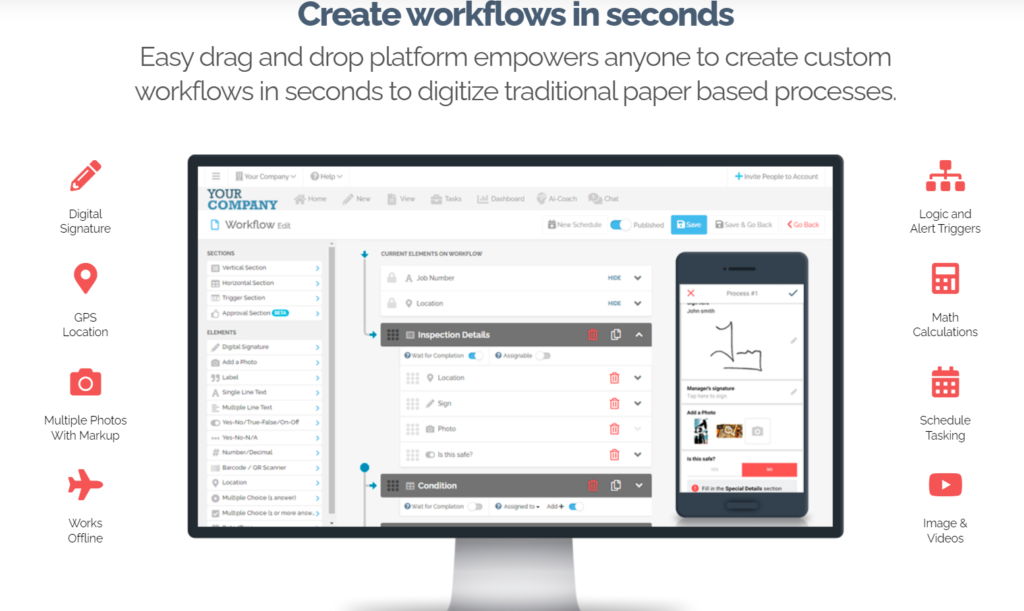Key Takeaways:
- Process Automation: PLC (Programmable Logic Controller) is critical for automating various processes in the oil and gas industry, enhancing operational efficiency and safety.
- Real-Time Monitoring: PLCs provide real-time monitoring and control of equipment, allowing for immediate response to any issues and minimizing downtime.
- Enhanced Safety: Implementing PLCs helps in maintaining safety by providing precise control over processes and reducing human error.
What is PLC in Oil and Gas?
PLC in oil and gas stands for Programmable Logic Controller. PLCs are essential components in the automation and control systems of oil and gas operations. They play a critical role in ensuring the efficiency, safety, and reliability of various processes.
This article delves into the significance of PLCs in the oil and gas sector, their applications, and how digital workflows like FAT FINGER can enhance their functionality.
Purpose of Programmable Logic Controllers (PLCs) in Oil and Gas
PLCs are industrial digital computers designed to control manufacturing processes, such as assembly lines, robotic devices, or any activity that requires high reliability and ease of programming.
In the oil and gas industry, PLCs are used to automate complex processes, monitor equipment, and ensure safety protocols are followed.
- Automation: PLCs automate repetitive tasks, reducing the need for manual intervention and minimizing human error.
- Monitoring: They continuously monitor equipment and processes, providing real-time data that helps in making informed decisions.
- Safety: PLCs ensure that safety protocols are adhered to, preventing accidents and ensuring the well-being of workers.
- Efficiency: By optimizing processes, PLCs enhance operational efficiency and reduce downtime.
PLC Applications: What Are PLCs Used For in Oil and Gas?

PLCs are used in various applications within the oil and gas sector. Here are some key areas where they play a crucial role:
Drilling Operations
In drilling operations, PLCs control the drilling rigs, monitor drilling parameters, and ensure that the drilling process is carried out safely and efficiently. They help in automating the drilling process, reducing the risk of human error, and improving the overall efficiency of the operation.
Production and Processing
PLCs are used in the production and processing of oil and gas to control and monitor various processes such as separation, refining, and transportation. They ensure that these processes are carried out efficiently and safely, reducing the risk of accidents and improving the quality of the final product.
Pipelines and Transportation
PLCs play a crucial role in the transportation of oil and gas through pipelines. They monitor the flow of oil and gas, control the pressure and temperature, and ensure that the transportation process is carried out safely and efficiently. PLCs also help in detecting leaks and other issues, preventing accidents and minimizing environmental impact.
The Importance of Safety in Oil and Gas Operations

Safety is a top priority in the oil and gas industry. The hazardous nature of the work environment necessitates stringent safety protocols to protect workers and the environment. PLCs contribute significantly to maintaining safety standards by automating safety checks and monitoring equipment.
Challenges in Ensuring Safety
Despite the advancements in technology, ensuring safety in oil and gas operations remains a challenge. Some common issues include:
- Human Error: Manual processes are prone to human error, which can lead to accidents and equipment failure.
- Inconsistent Safety Checks: Inconsistent or incomplete safety checks can result in overlooked hazards.
- Data Management: Managing and analyzing large volumes of data from various sources can be overwhelming.
Enhancing Safety with FAT FINGER Digital Workflows

FAT FINGER offers powerful digital workflows that can significantly enhance safety in oil and gas operations. By leveraging FAT FINGER’s digital solutions, companies can streamline their safety processes, reduce human error, and ensure compliance with safety standards.
Take 5 Safety
The Take 5 Safety checklist is designed to help workers quickly assess potential hazards before starting a task. This proactive approach ensures that safety measures are in place, reducing the risk of accidents.
Near Miss Reporting
Near Miss Reporting allows workers to report incidents that could have resulted in accidents. By analyzing these reports, companies can identify patterns and implement preventive measures to avoid future incidents.
Job Hazard Analysis
The Job Hazard Analysis checklist helps in identifying potential hazards associated with specific tasks. By assessing these hazards, companies can implement appropriate safety measures to protect workers.
Risk Assessment
Risk Assessment involves evaluating the potential risks associated with various operations. FAT FINGER’s digital workflow makes it easy to conduct thorough risk assessments, ensuring that all potential hazards are identified and mitigated.
Incident Reporting in the Workplace
Incident Reporting in the Workplace allows workers to report accidents and incidents in real-time. This immediate reporting ensures that appropriate actions are taken promptly to address the issue and prevent recurrence.
Journey Report
The Journey Report checklist helps in monitoring the safety of workers during transportation. By tracking their journey, companies can ensure that safety protocols are followed, reducing the risk of accidents.
Case Studies: Real-World Applications of FAT FINGER

Several companies in the oil and gas industry have successfully implemented FAT FINGER’s digital workflows to enhance their safety processes. Here are a few examples:
Case Study 1: Enhancing Drilling Safety
A leading oil and gas company implemented FAT FINGER’s Take 5 Safety checklist in their drilling operations. This proactive approach helped them identify potential hazards before starting tasks, reducing the number of accidents and improving overall safety.
Case Study 2: Improving Incident Reporting
Another company used FAT FINGER’s Incident Reporting in the Workplace checklist to streamline their incident reporting process. This real-time reporting allowed them to address issues promptly, reducing downtime and improving safety.
Conclusion
PLCs play a crucial role in the oil and gas industry by automating processes, monitoring equipment, and ensuring safety. However, challenges such as human error and inconsistent safety checks can still pose risks. FAT FINGER’s digital workflows offer a comprehensive solution to these challenges, enhancing safety and efficiency in oil and gas operations.
By leveraging FAT FINGER’s powerful safety checklists, companies can streamline their safety processes, reduce human error, and ensure compliance with safety standards. To experience the benefits of FAT FINGER’s digital workflows, create a safety workflow for free or request a demo today.
FAQs for PLC in Oil and Gas
Q: What is a Programmable Logic Controller (PLC)?
A PLC is an industrial computer used to automate and control processes in industries such as oil and gas. It monitors inputs, makes decisions based on its program, and controls outputs to automate processes.
Q: How does a PLC enhance operational efficiency in the oil and gas industry?
PLCs automate repetitive tasks, reducing the need for manual intervention. This leads to faster and more accurate operations, minimizes errors, and increases overall efficiency.
Q: What are the main functions of a PLC in oil and gas operations?
PLCs are used for process control, monitoring, and automation. They can control machinery, monitor safety systems, and manage data from various sensors, ensuring smooth and safe operations.
Q: How does real-time monitoring with PLCs improve safety?
Real-time monitoring allows for the immediate detection of anomalies or malfunctions. PLCs can automatically shut down equipment or trigger alarms to prevent accidents, ensuring a safer work environment.
Q: What are the advantages of using PLCs over traditional control systems?
PLCs offer greater flexibility, reliability, and scalability compared to traditional control systems. They can be easily programmed and reprogrammed to adapt to changing operational requirements, making them ideal for complex industrial processes.
Q: How do PLCs contribute to reducing downtime in the oil and gas industry?
PLCs provide real-time data and diagnostics, allowing for quick identification and resolution of issues. This minimizes downtime and ensures continuous operation, which is crucial in the oil and gas industry.
Q: What role do PLCs play in maintaining regulatory compliance?
PLCs ensure that processes are executed consistently and according to predefined standards. This helps in maintaining compliance with industry regulations and standards, reducing the risk of violations and penalties.
Q: Can PLCs be integrated with other digital technologies?
Yes, PLCs can be integrated with other digital technologies such as IoT devices, digital workflows, and data analytics platforms, enhancing their functionality and providing comprehensive control and monitoring capabilities.
Q: How do PLCs help in drilling operations?
In drilling operations, PLCs control the drilling rigs, monitor drilling parameters, and ensure that the drilling process is carried out safely and efficiently. They help in automating the drilling process, reducing the risk of human error, and improving overall efficiency.
Q: What is the significance of PLCs in pipeline transportation?
PLCs monitor the flow of oil and gas, control pressure and temperature, and detect leaks, ensuring safe and efficient transportation through pipelines. They play a crucial role in minimizing environmental impact and ensuring the integrity of pipeline operations.

